
 |
|
|
#1 |
|
All the news that's fit to excerpt
Name: newsie
Location: who knows?
Join Date: Jun 2008 Motorcycle(s): only digital replicas Posts: Too much.
|
[cycleworld.com] - 2022 Suzuki GSX-S1000GT+ First Ride Review
Cycle World hits the road aboard the 2022 GSX-S1000GT+ to test the long-haul capabilities of Suzukiís newest sport-tourer.
Click here to view on their site. 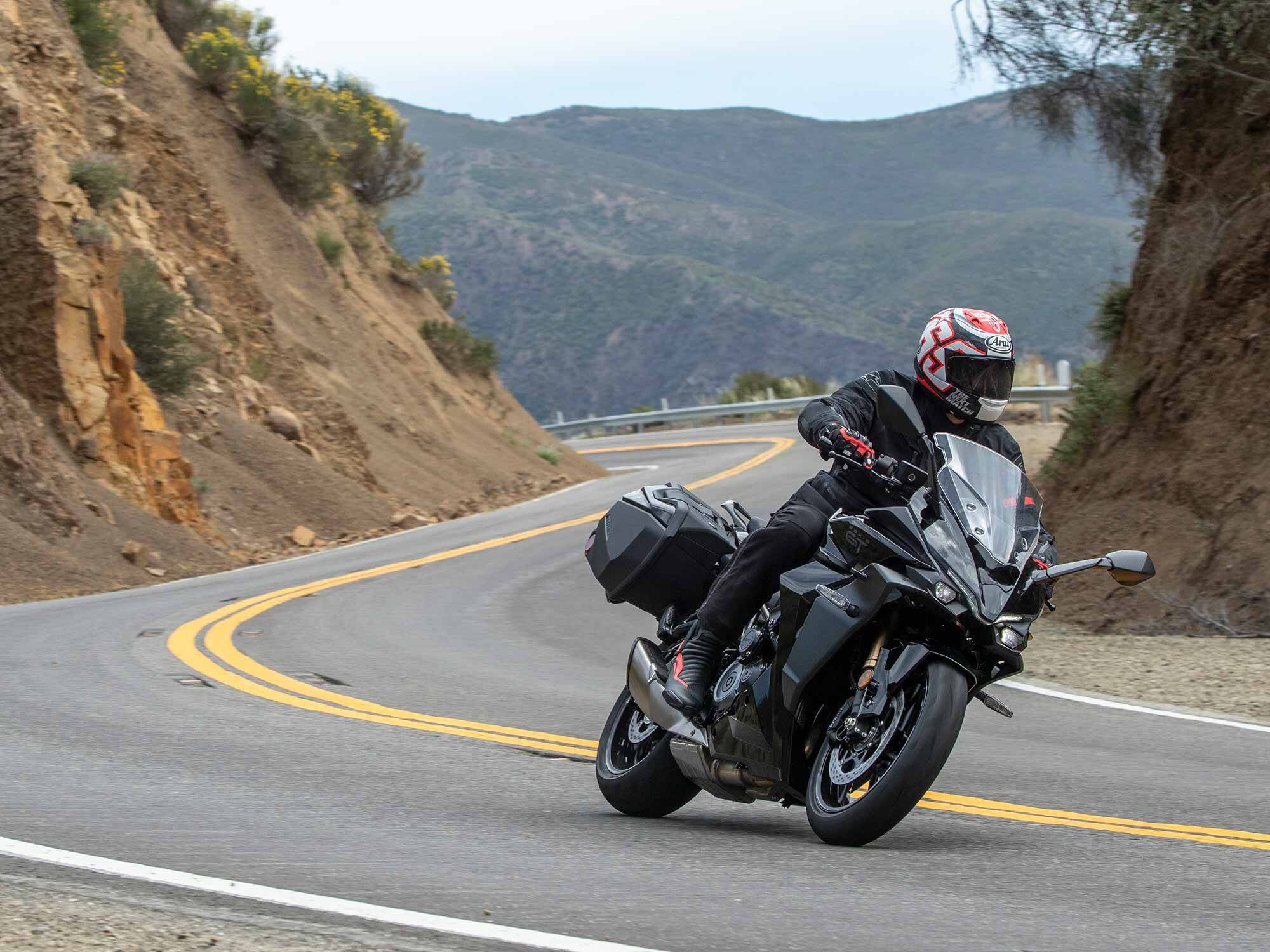 The 2022 GSX-S1000GT+ reintroduces Suzukiís modern sport-touring option with an emphasis on sport. (Kevin Wing/)If at first you donít succeed, try, try again. Easier said than done, especially when youíre engineering and manufacturing vehicles. Yet here we are aboard the 2022 GSX-S1000GT+, Suzukiís latest-generation sport-tourer and a clear sign that the Japanese manufacturer is giving it another try. As it turns out, youíll be glad they did. It would be wrong to suggest that Suzuki hasnít had any previous success with building memorable sport-touring bikes. Luggage-equipped Bandits come to mind, as do versions of the GSX1250. But even with those notches in its belt, Suzuki has struggled to capture the spirit of modern-day sport-touring and find the sweet spot where performance, comfort, and fun all come together. The all-new Grand Tourer looks to change that. 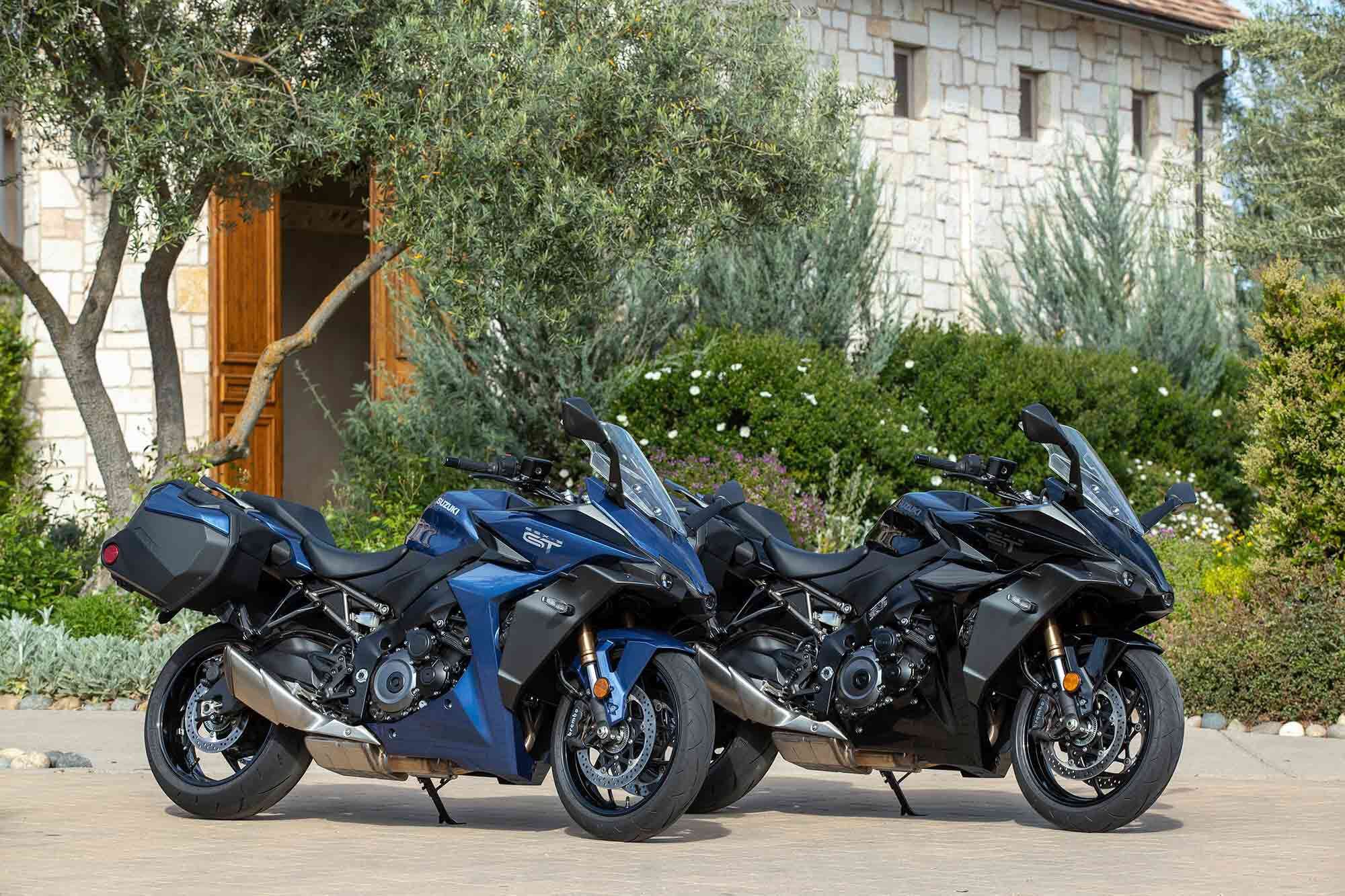 Both GT models are available in Majestic Metallic Reflective Blue and Glass Sparkle Black. Notice the shape of the new upper and lower fairing, which not only look modern but are designed to reduce direct pressure to the riderís helmet, shoulders, and knees. (Kevin Wing/)The GT platform consists of two models, the GSX-S1000GT ($13,149) and the luggage-equipped GT+ ($13,799). These take the place of the capable but forgettable GSX-S1000F, which quietly fell out of Suzukiís lineup in 2021, either to make space for this platform or as an admission of defeat at the hands of the feature-rich competition. Suzukiís formula here is familiar. As itís done in the past, Suzuki borrowed concepts and hard parts from previous S-branded sportbikes. Similarly, the bike has been built off bones that could be shared with the naked, city-oriented GSX-S1000 that Cycle World also just tested. The difference here is that, evidently, Suzuki set out to build a capable sport-tourer before anything else. The 1000F failed, in part, because it was a naked bike with a fairing tacked on. It filled a hole in the lineup, but didnít truly satisfy the needs of a sport-touring rider. The GT would seem to be Suzukiís promise not to make that mistake again. 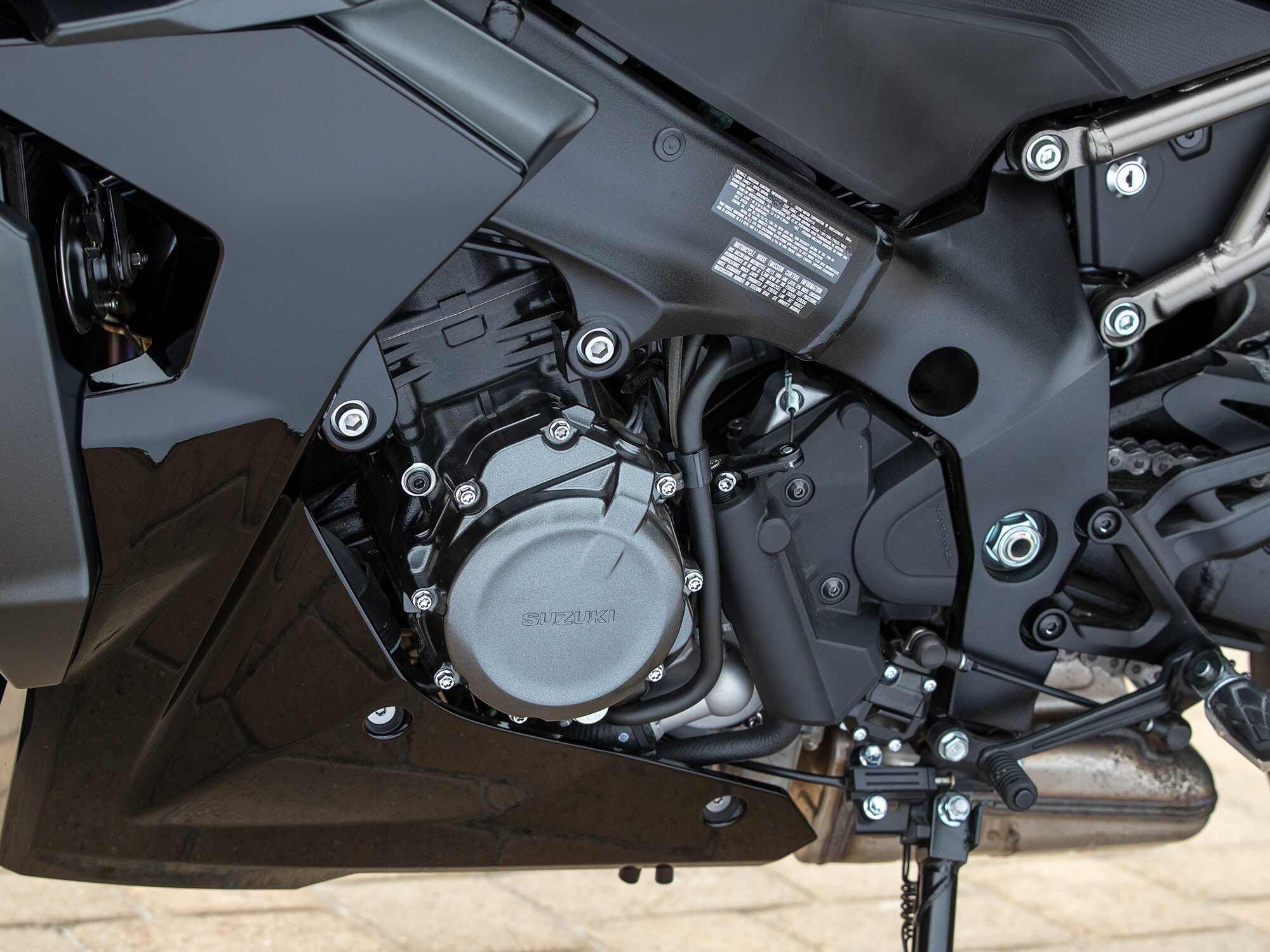 Already known for its flexible performance, Suzukiís 999cc long-stroke engine has been updated to offer a broader and smoother power curve, plus a slight power increase up top. (Kevin Wing/)The Tools for Touring Suzuki didnít have to start completely fresh when building the GT. Thatís the benefit of being the company behind one of the most successful superbikes of all time, the immortal GSX-R1000. Sportbike lineage comes first and foremost from the engine, a powerplant made famous by the K5 GSX-R and later ďretuned for midrangeĒ so that it could be used in Suzukiís road-focused lineup. Suzuki is careful to point out that this is a heavily updated version of that 999cc long-stroke mill. Compared to the GSX-S1000F, the torque curve is broader and smoother with a slight power increase up top. Key to this improved character are the new camshafts, which decrease lift and valve overlap. Retooled valve springs are matched to the new camshafts, while a revised cam-chain tensioner and tension adjuster reduce friction and improve durability. The shift shaft, clutch assembly, and engine cases are also on the list of new-for-í22 components. 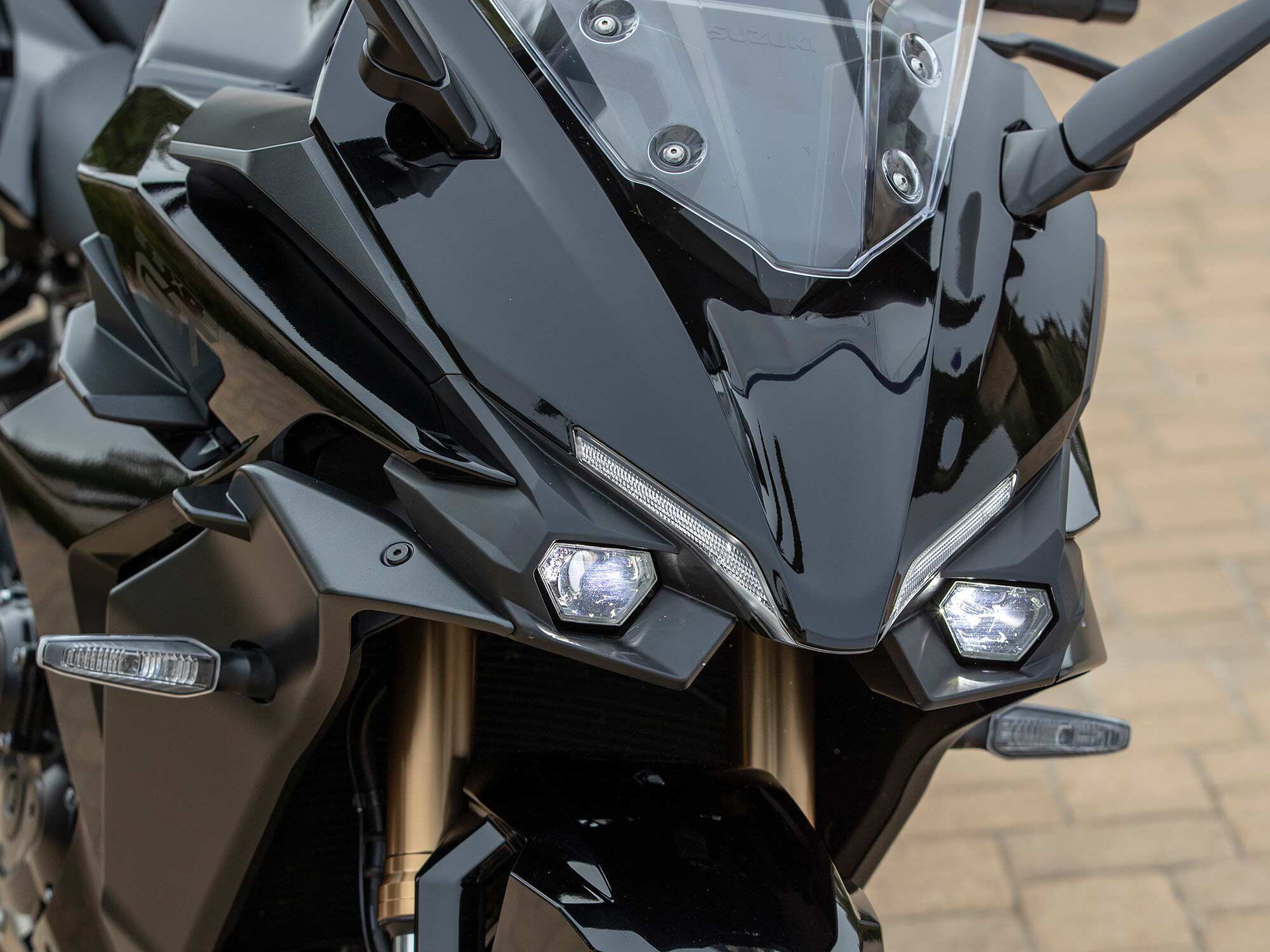 The GTís independent, high- and low-beam headlights use mono-focus LED technology that shines light directly through a convex lens to light the road. With a GT+ and V-Strom behind me, it was readily apparent how much stronger the GT+ headlights were. (Kevin Wing/)New electronic throttle bodies help smooth out the engine response, and the ride-by-wire setup opens the door to a suite of electronic systems including Suzuki Drive Mode Selector (SDMS) with three selectable ride modes, Traction Control (TC), Electronic Cruise Control (CC), and a bidirectional Quick Shift system (QS). The air cleaner has a new internal structure that contributes to the GTís increased performance and has been reshaped to accommodate the larger-capacity fuel tank, which deserves its own mention. 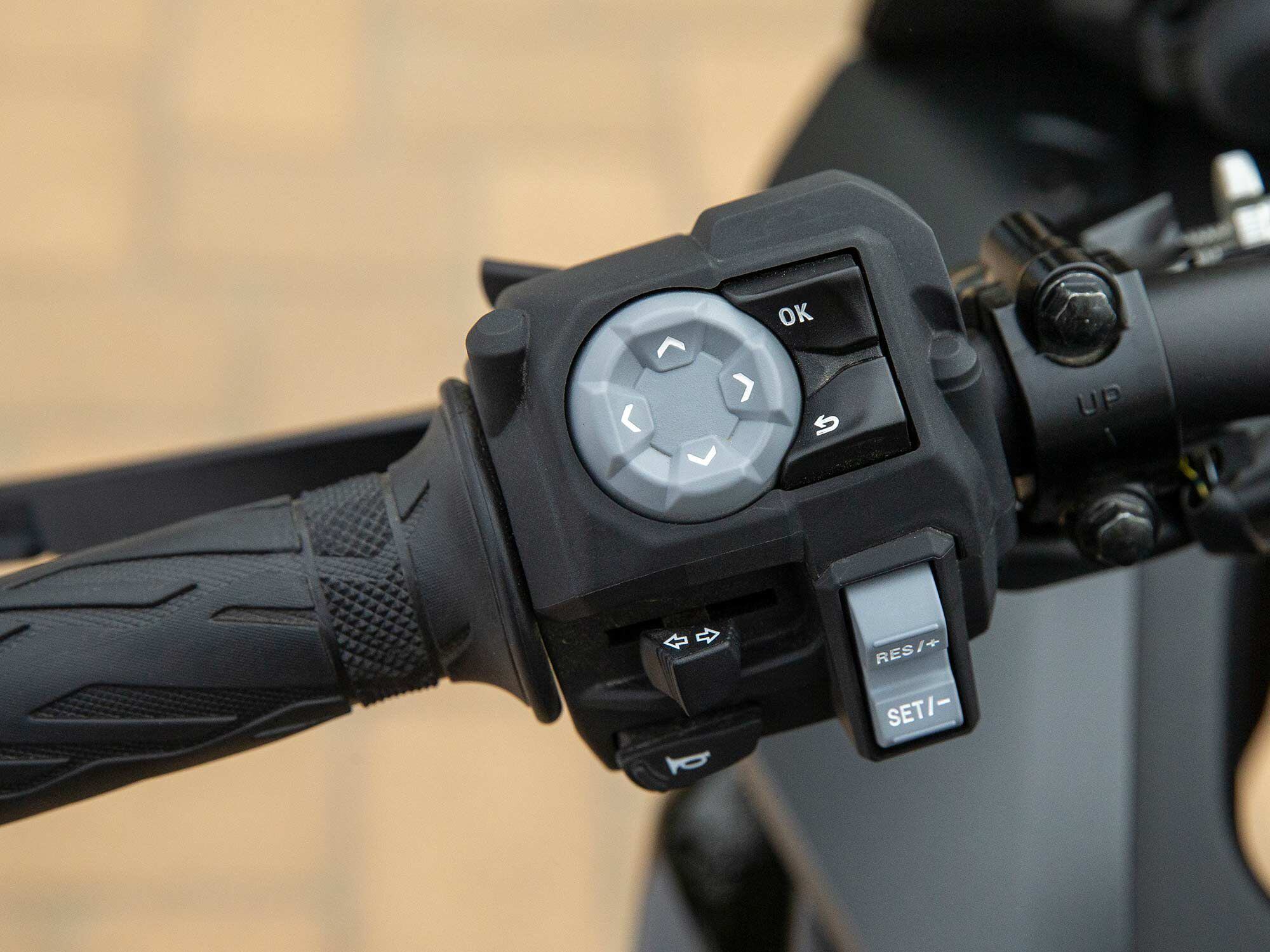 Ride modes and rider-aid settings are adjusted via an easy-to-use four-direction switch on the left side of the handlebar; cruise control speed can be adjusted via the switch on the lower right area of the cluster. It takes just minutes to get accustomed to the setup. (Kevin Wing/)The GT is outfitted with a slip/assist clutch called the Suzuki Clutch Assist System (SCAS) and uses a close-ratio transmission borrowed from the GSX-R1000, with vertically staggered shafts to reduce overall engine length. Carryover items like this are a major indicator that Suzuki intended this sport-touring bike to place the emphasis on sport. More connections to the GSX-R1000 are found in the chassis, the foundation of which is a twin-spar aluminum frame with relatively straight main spars offering higher rigidity and lighter weight. The swingarm comes straight from the GSX-R1000, while wheels are unique to the GSX-S. So too are Dunlopís new Roadsport 2 radial tires (120/70ZR-17 at the front and a new, wider sized 190/50ZR-17 at the rear). 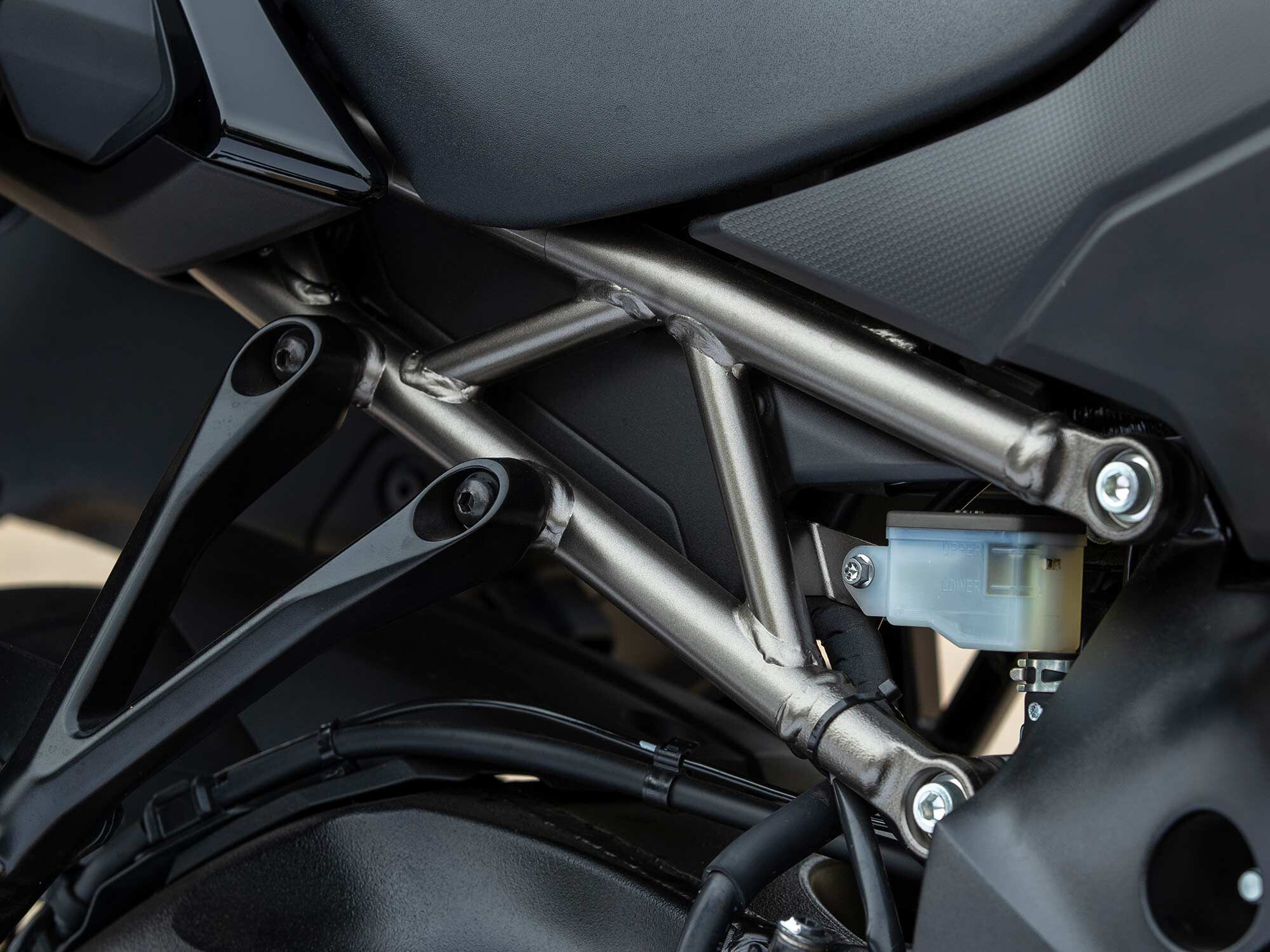 Form and function meet in pieces like the trellis-style subframe, which not only raises the GTís cool factor but adds the structural support needed when carrying a passenger and luggage. (Kevin Wing/)A much more obvious change is the addition of a bolt-on trellis-style subframe, which not only looks trick but adds structural support for two-up riding with luggage. Brakes include fully floating 310mm discs up front with Brembo Monoblock calipers; ABS comes standard. Youíd assume that would be enough to help the GT stand out against its predecessor, yet Suzuki is just getting started. Much of what sets the GT apart from the F is in design, ergonomics, and the technology interwoven through each of these areas. The riding position has been rethought, as has the entire ride experience, thanks to new (to Suzuki) technology. 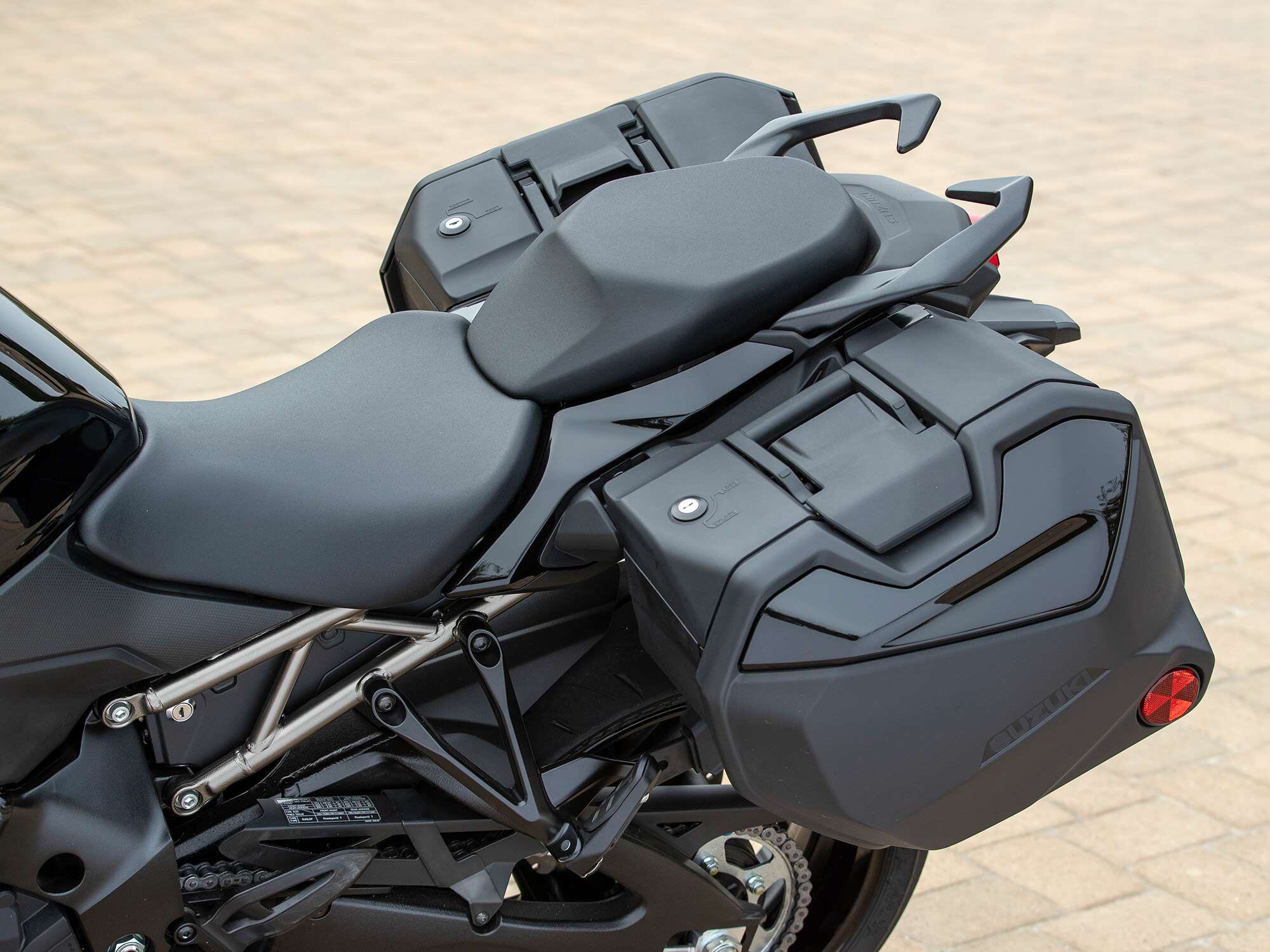 Color-matched 36-liter hard cases come standard on the GT+ and are extremely easy to remove. Notice the relatively small surface area of the otherwise comfortable-looking passenger seat. (Kevin Wing/)The reworked ride position starts at the handlebar, which is rotated upward and is 23mm wider than the GSX-S1000Fís bar. Rider and passenger seats have a new design; the passenger seat sits 2.3 inches higher than the rider seat for better visibility. Suzuki says that it went to great lengths to ensure the passenger enjoyed the trip just as much as the rider, and some of that boils down to having rubber-damped components at all rider/bike junctions. Which brings us to the updated design and list of technology, two areas where the F model stalled out. Developed in the wind tunnel by a team unafraid to push the limits of modern sportbike design, the GT benefits from aggressive lines that bring Suzukiís sport-tourer into the 21st century. Unique touches here include a lower-fork bracket cover extending up into the fairing to deflect airflow that would otherwise whirl up around the instrument panel and rider; winglets that help minimize air pressure on the riderís knees; and a windscreen thatís wide, but uses folded edges to reduce airflow that would otherwise press against the riderís shoulders. The GTís 5-gallon tank, in addition to adding a half-gallon of fuel capacity, is unique in that it seems to share some lines with the Katana, helping to keep things in the Suzuki family. 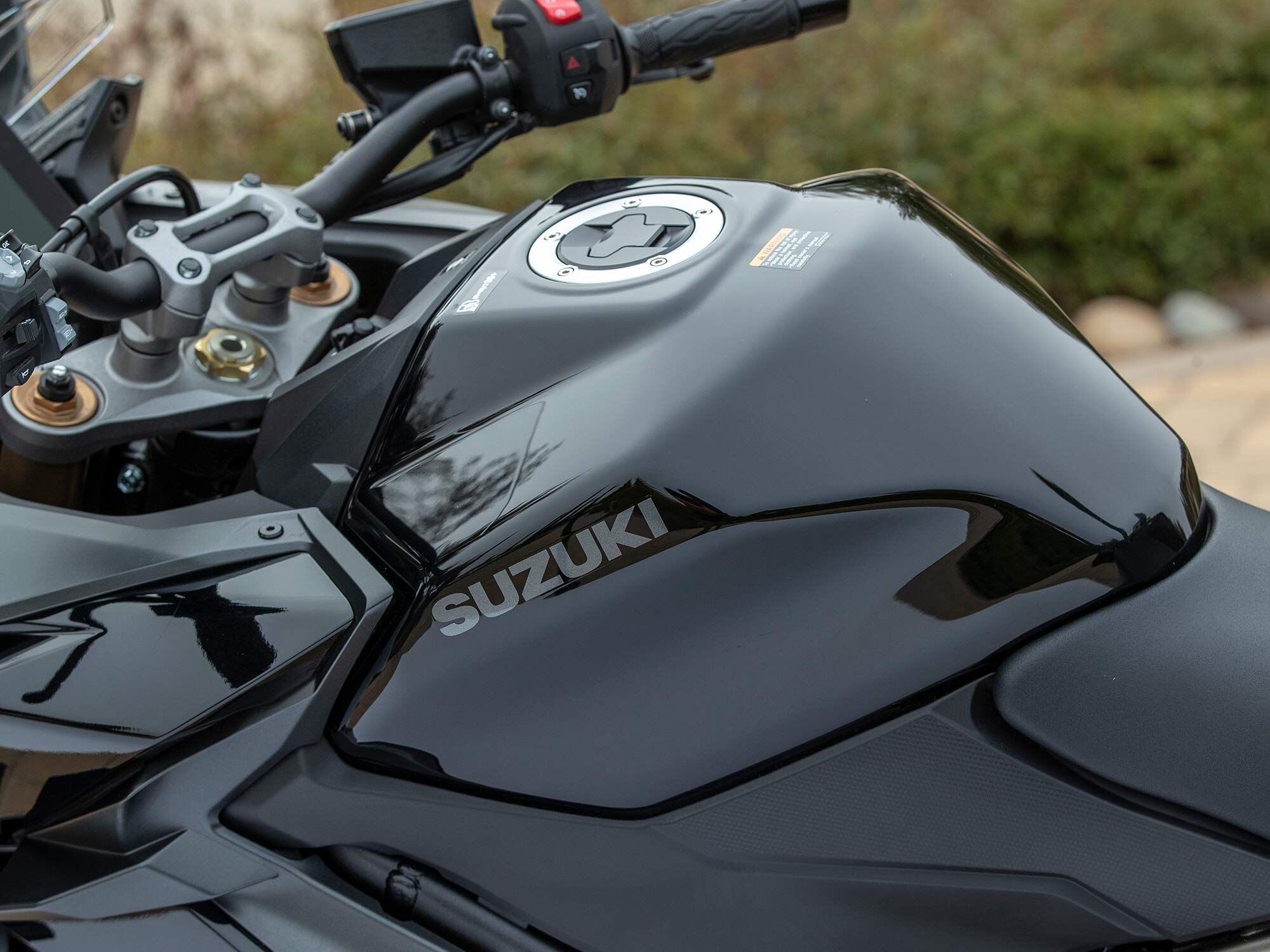 The GTís 5-gallon fuel tank is a half-gallon larger than the GSX-S1000Fís tank and, like the rest of the bike, is designed with way more personality than the outgoing piece. (Kevin Wing/)Body lines are equally as sharp out back, especially on the GT model, which comes without luggage and therefore puts the aggressively styled tailsection on full display. Upgrading to the GT+ gets you a true sport-touring machine with standard 36-liter side cases color-matched to the bike. These are capable of carrying a full-face helmet and can be removed in just seconds. The last thing you need is to be fighting your side cases as you roll into the hotel parking lot after a 10-hour day in the saddle. GT+ customers will also have the chance to upgrade to a 2.75-inch taller screen that arches forward for reduced airflow to the rider. 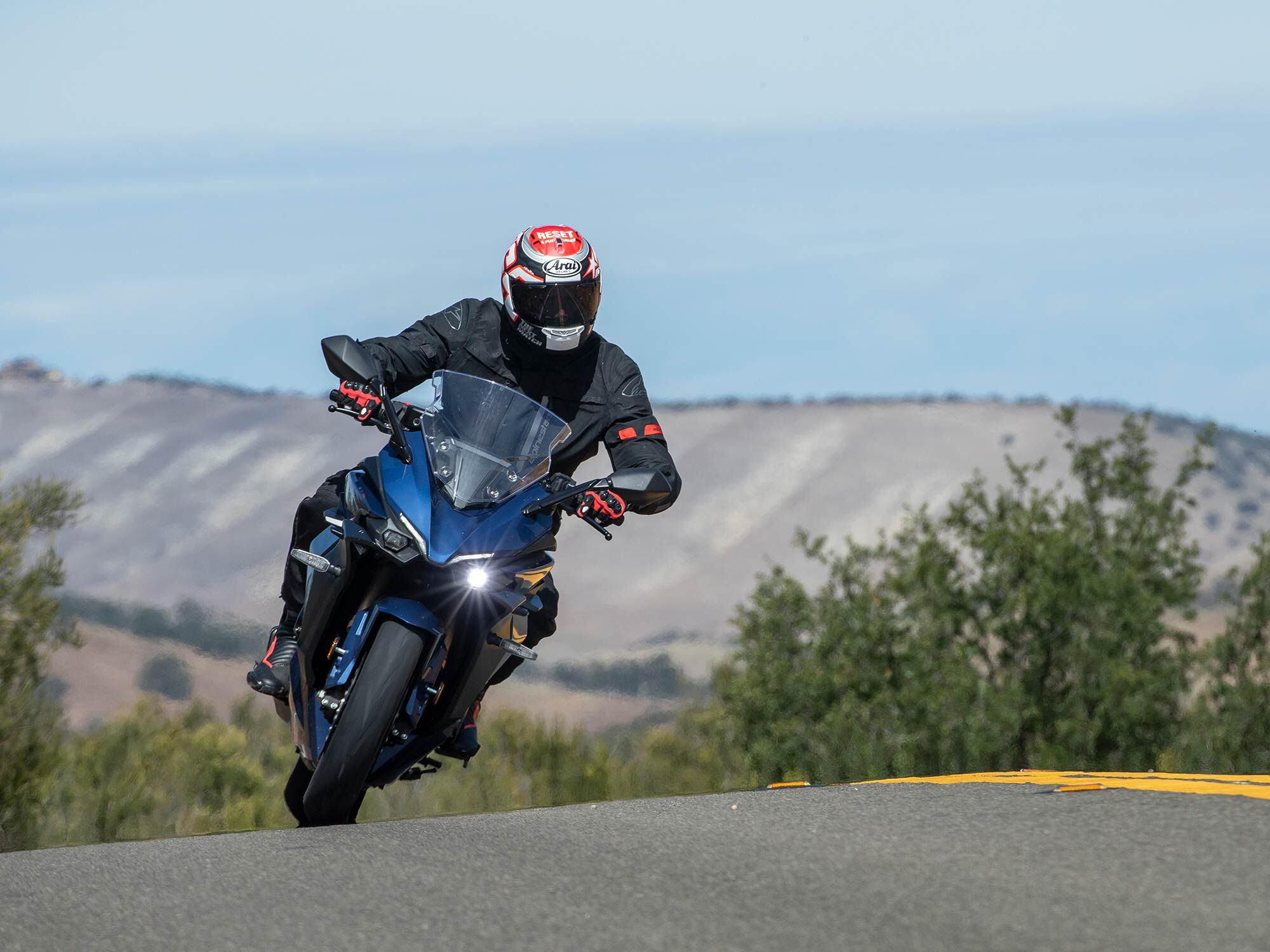 Converting the GT+ to a GT is as simple as removing the side cases, which narrows the bikeís rear end. While doing so exposes some hardware, Suzuki has done a good job ensuring fit and finish is nice even with the luggage removed. Stock GT models come standard with a panel that covers the area where luggage hardware is used on GT+ models. (Kevin Wing/)Standard on all models is a new 6.5-inch TFT display, which happens to be the first TFT display on a Suzuki motorcycle of any kind. Again, the GT is Suzuki getting serious. Other beneficial technologies include the aforementioned bidirectional quickshifter for clutchless upshifts and downshifts, selectable ride modes, cruise control, and five-level traction control. Lesser-known systems that are equally as nice to have include the Suzuki Low RPM Assist System, which helps with smooth launches by moderately increasing engine speed when pulling away from a stop, and the Suzuki Easy Start System, which starts the bike with just a tap to the starter. Friendly reminder: Thereís no need to pull the clutch in to start this bike so long as itís in neutral. Long Way Up Even if youíve just glanced at the GTís list of upgrades, youíll realize that Suzuki is intent on building the best sport-touring bike it can. Therefore, a test with anything less than 300 miles would be a disservice to the team who brought the GT to life and to the bike itself, not to mention you, dear reader. Which brings us to the backroads of Central California and a two-day, 500-plus-mile ride to, around, and back from wine country. The first thing riders will notice when riding the GSX-S1000GT is the engine. While it may seem almost unnecessary to ramble on about how sweet this classic powerplant is, it deserves repeating: This is one of the all-time great road riding engines. The changes Suzuki has made for 2022 only add to the experience; the torque curve is broad and smooth, with power coming on strong at 6,000 rpm. The engine is so flexible that on a typical twisting section of road, shifts are more of an option than a necessity. The bike sounds sporty too; itís hard not to think how good it might sound with a slip-on exhaust equipped. Attention, Yoshimura. 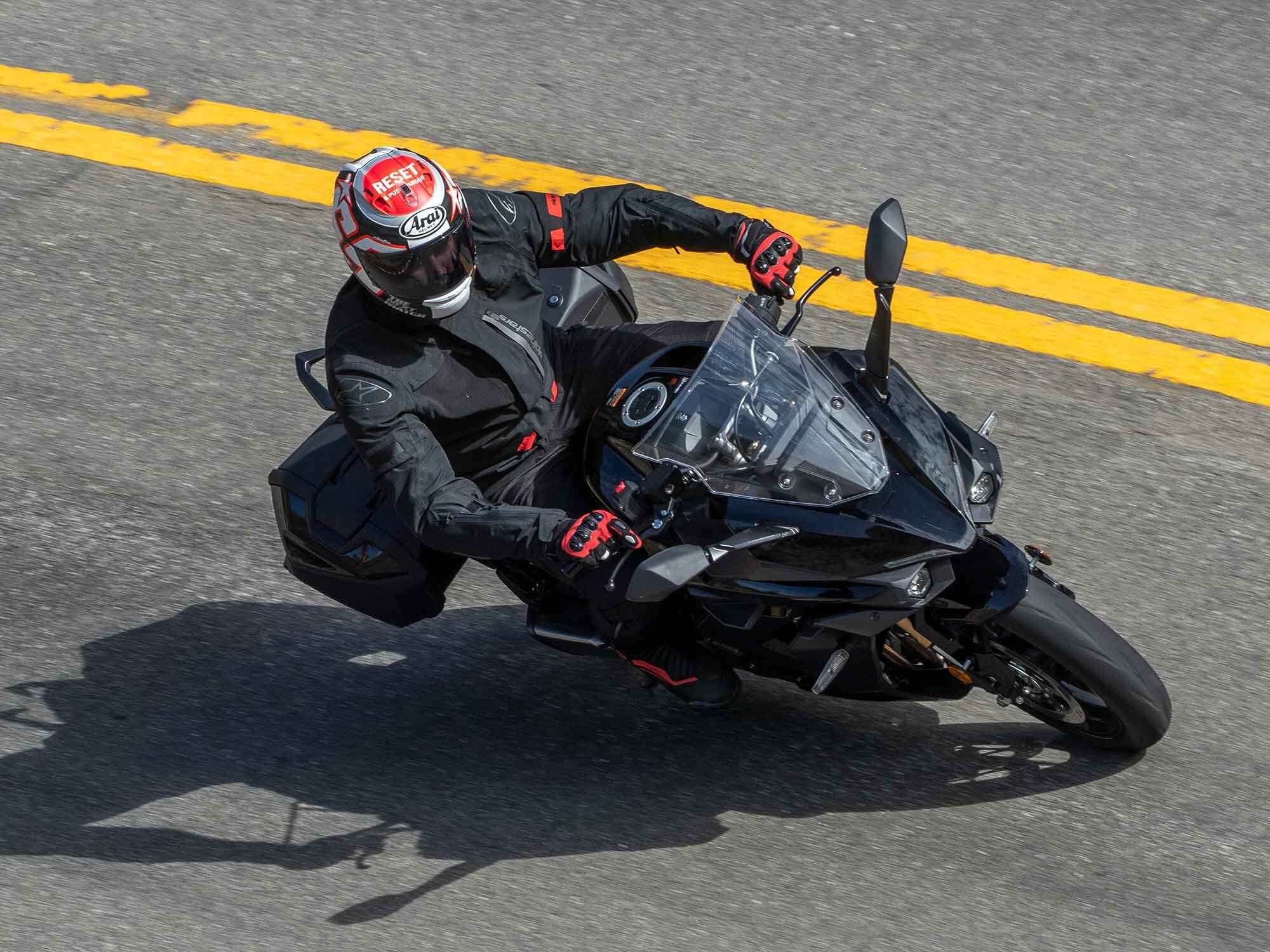 The GT+ís tall, wide handlebar is just one piece of the ergonomics puzzle, but does a nice job of creating a neutral riding position and offers good leverage through tight sections. (Kevin Wing/)Fueling is smooth, if not a touch aggressive, in the A riding mode, which seems better suited to fast, open backroads with gentle curves throughout. In every other situation, the B mode works great. The biggest benefit here is a smoother transition between on/off throttle, ideal for navigating traffic or working through tighter sections of canyon road where the throttle is on and off more frequently. Peak power is the same in all modes, including the weather-conscious C mode. And while the Suzuki wonít light a fire under your butt like some of its competitors, thereís more than enough power up top to experience the sport side of sport-touring. Adding to that experience, of course, is the quickshifter, which is among the best units on a road-going bike today and proof of what electronic wizardry Suzuki engineers are capable of when they put their heads down. 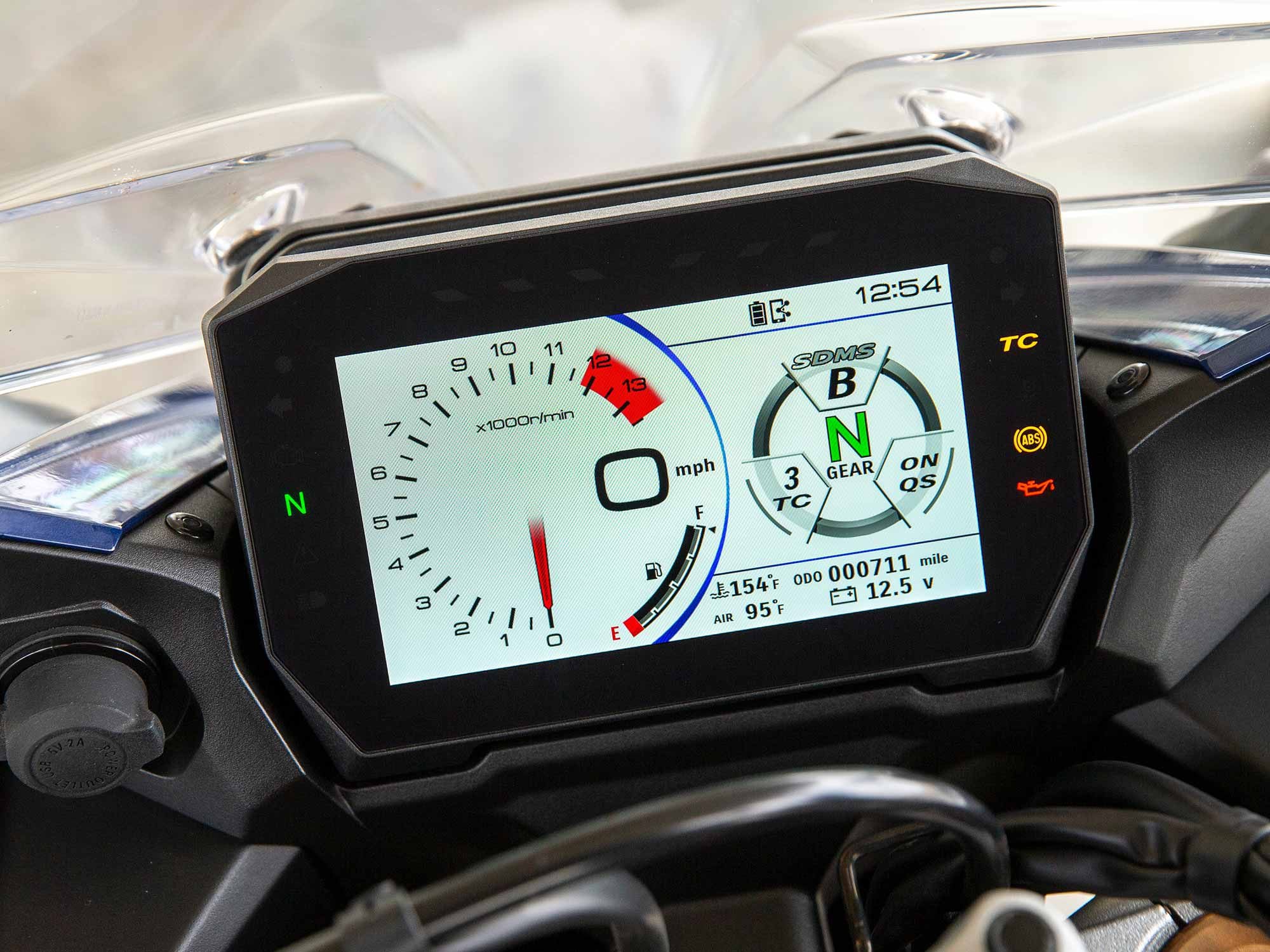 The 6.5-inch TFT display is the first on a Suzuki motorcycle and worth the wait. A simple layout and crystal clear image make it both simple to navigate and easy to read at a glance. (Kevin Wing/)The rest of Suzukiís electronics package is equally sweet, with very few blemishes in a very polished package. The simple, elegant TFT display provides a crystal clear view of important information, and is easy to navigate thanks to a well-designed switch cluster that most riders will adapt to in just minutes. Adjusting ride modes, traction control levels, and quickshifter settings can be done on the fly and with relative ease. And itís worth noting that, sensibly, the settings remain after the key has been cycled; thank you, Suzuki. Itís easy to see the trend. With its GT platform, Suzuki has found a balance between track-born technology and touring-focused features. That continues through the entire GT experience. Rapid, clutchless downshifts are fun, but so too is being able to pull away from a stop with absolute ease thanks to the Suzuki Low RPM Assist System. Laugh all you want, but even the best riders can botch a launch with a passenger on the back and the bike fully loaded with luggage. In the GT, you have a bike thatís user-friendly and confidence inspiring, not only because of its well-balanced nature, but because of the quiet details that Suzuki continues to fine-tune. 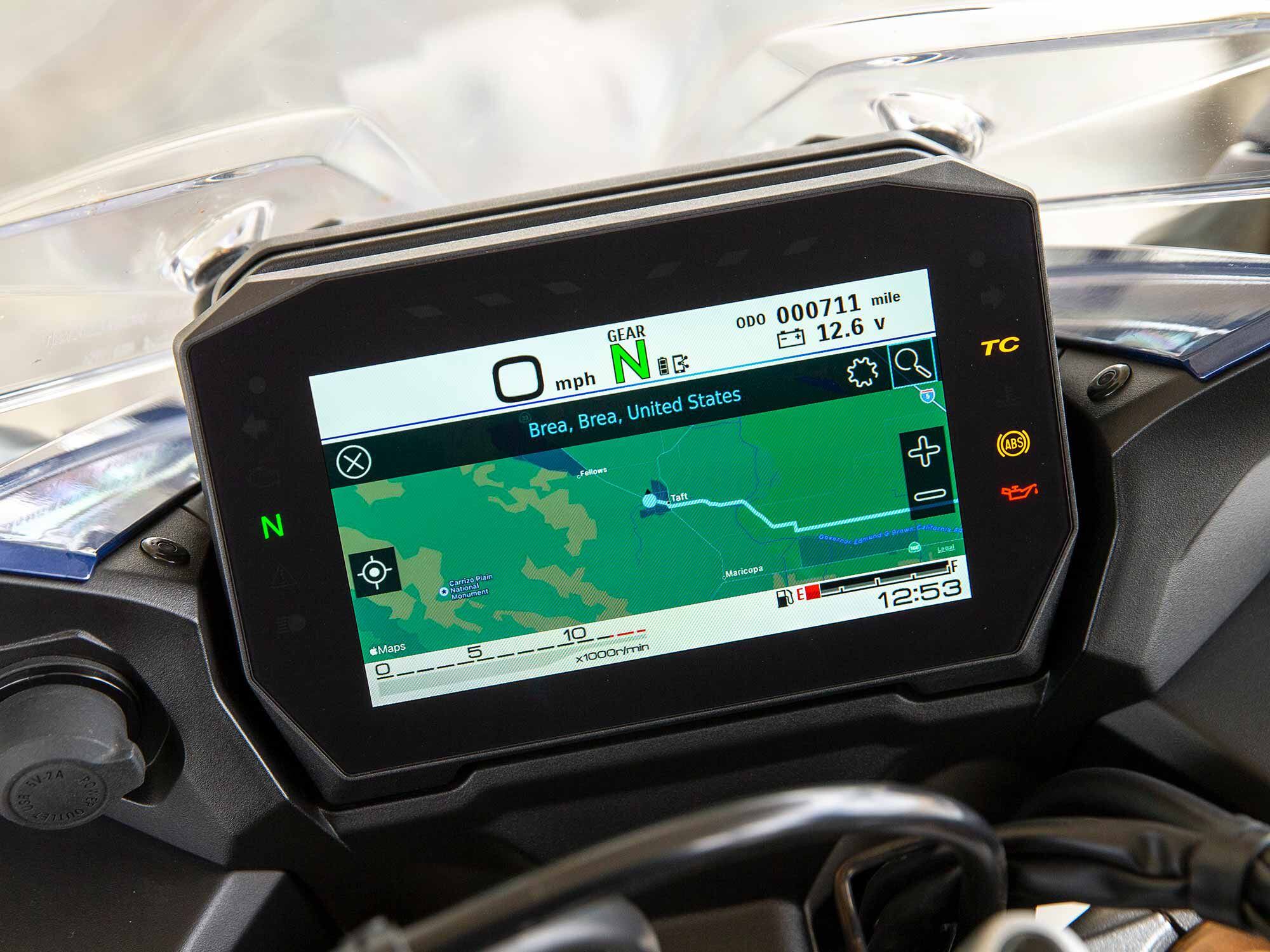 Smartphone connectivity is available through the Suzuki mySPIN app, which provides access to contacts, phone, maps, music, and your calendar, through the 6.5-inch TFT display. The system requires use of a Bluetooth headset, which we didnít have on our ride. (Kevin Wing/)Well-balanced is also the perfect way to describe the GTís chassis and handling manners. Weighing in at a claimed 498 pounds, the GT+ is almost 16 pounds lighter than the Kawasaki Ninja 1000SX when measured without the standard side cases. The bike carries its weight well, though the touring-focused features tack on enough weight that the GT is a touch heavy when being leaned into a corner, or when flicked from side to side chasing the best curves. This is likely why Suzuki incorporated a wider handlebar, which provides more leverage for less steering effort. Suspension consists of a 43mm inverted KYB fork and a shock with spring rates and damping setup specific to the GSX-S1000GT+. Stock settings are admittedly soft, allowing the bike to move around as you roll over the occasional bump in the road. This was no problem, as slowing the rebound front and rear kept suspension movement to a minimum and helped keep the bike controlled regardless of road conditions. Worth mentioning is that the fork is fully adjustable, while the shock is adjustable for rebound and preload only. 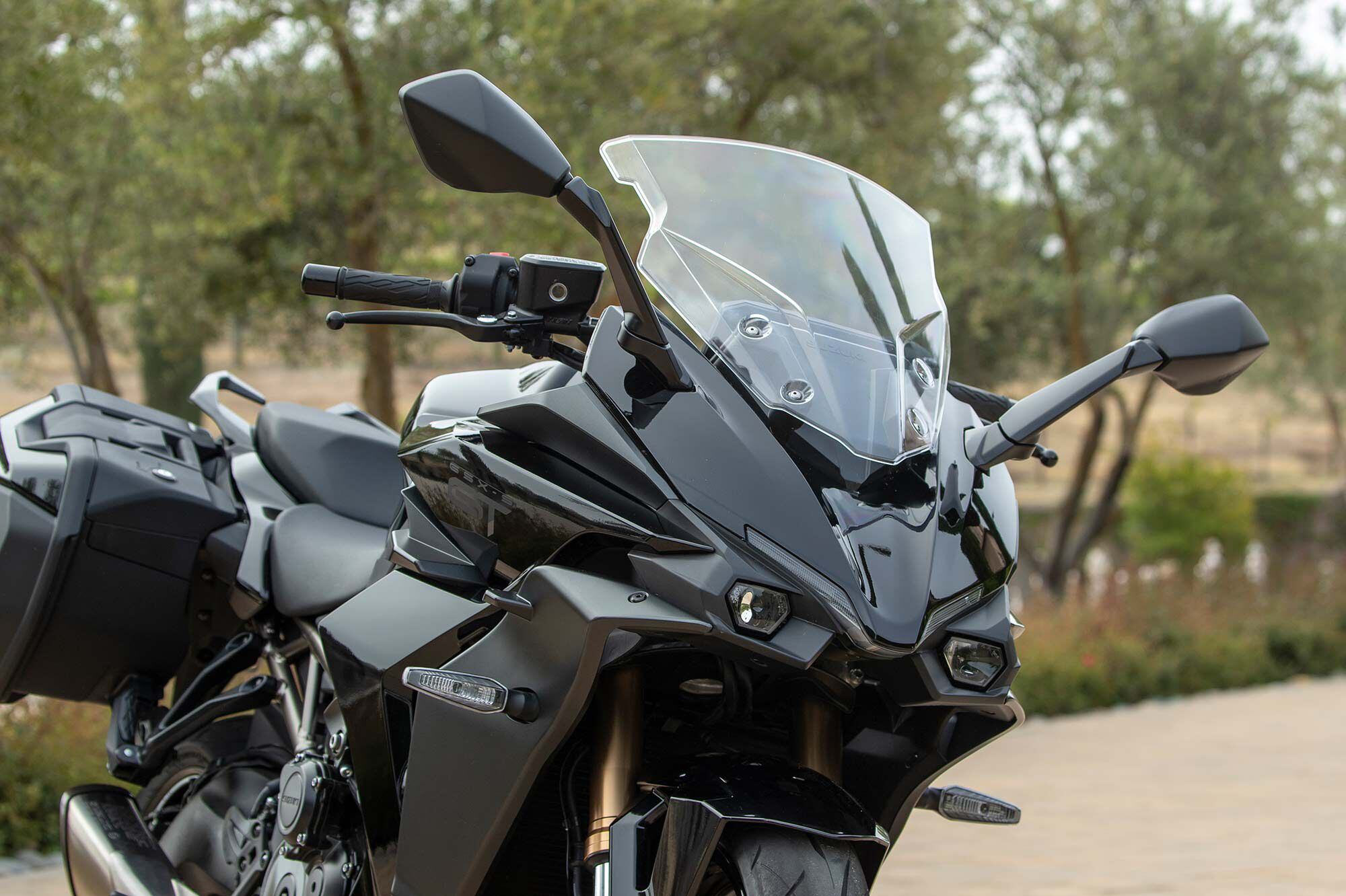 Shown here is a GT+ with standard windscreen. Weíd prefer the bike came with an adjustable screen standard, but nonetheless, itíll be interesting to see how the optional, 2.75-inch-taller GT+ screen affects airflow. (Kevin Wing/)With suspension sorted, the bike is incredibly stable when leaned over, with good feedback through the chassis and an ability to hold its line well. Consistent, sure-footed handling is important on any long tour where riders see countless corners, and thatís exactly what the GT delivers. The brakes are a similar sport-touring story. The initial bite feels relatively muted, yet stopping power quickly ramps up and does a good job of getting the luggage-equipped bike slowed down. While it could be argued that a bike with ďsportĒ in its DNA should have a stronger initial bite, this braking package is exactly whatís needed; the average sport-touring ride will put you in a wide variety of weather or road conditions, and itís a good thing to not overwhelm the chassis or tires when slowing all that weight down. That progressive power also limits the chance of surprising and overwhelming a passenger with a quick stab of the lever. Suzuki has once again found the balance between performance and comfort. 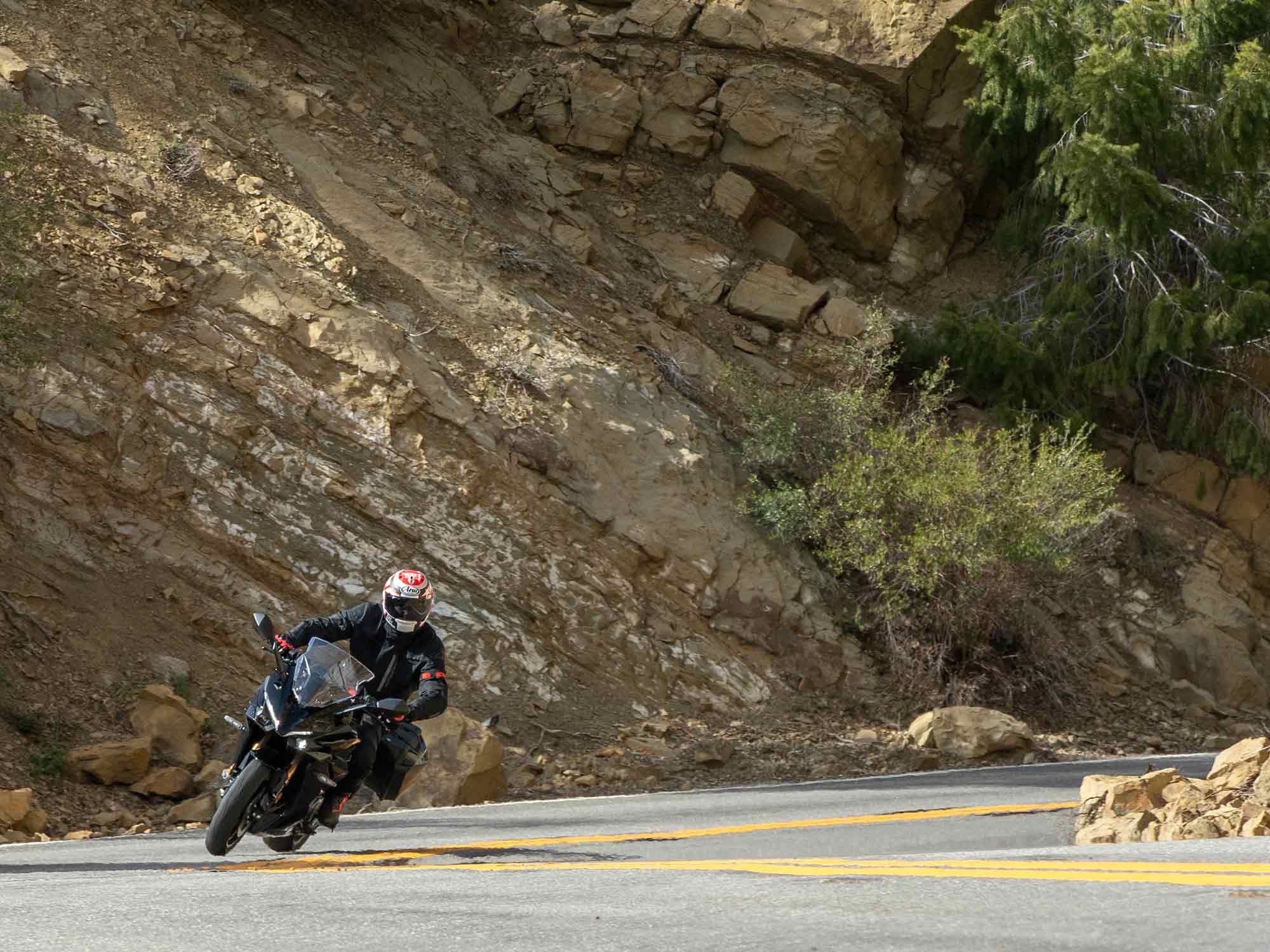 The best sport-touring rides should include spirited passes through remote canyons, and the GT+ doesnít disappoint in this environment. (Kevin Wing/)Along those lines, passenger comfort is a bit of a question. The passenger seat looks thick and comfortable, but the relatively small surface area inspires speculation regarding just how many miles or hours a companion may want to spend on the back of the bike. The GT+ might be better for shorter two-up trips, with longer rides reserved for just the rider. Our two 250-mile days of spirited riding were probably on the upper limits of what a passenger would want to subject themselves to. The riding position isnít nearly as compromising. That tall handlebar and wide seat create a neutral, upright riding position. When positioned toward the front of the seat, riders will notice that the tank is a touch wide, but there are very few vibrations throughout, a testament to Suzukiís efforts at damping vibes by using rubber-damped components. The bike has just enough character to remind riders that theyíre on a motorcycle, but not enough to overwhelm them after a full day in the saddle. 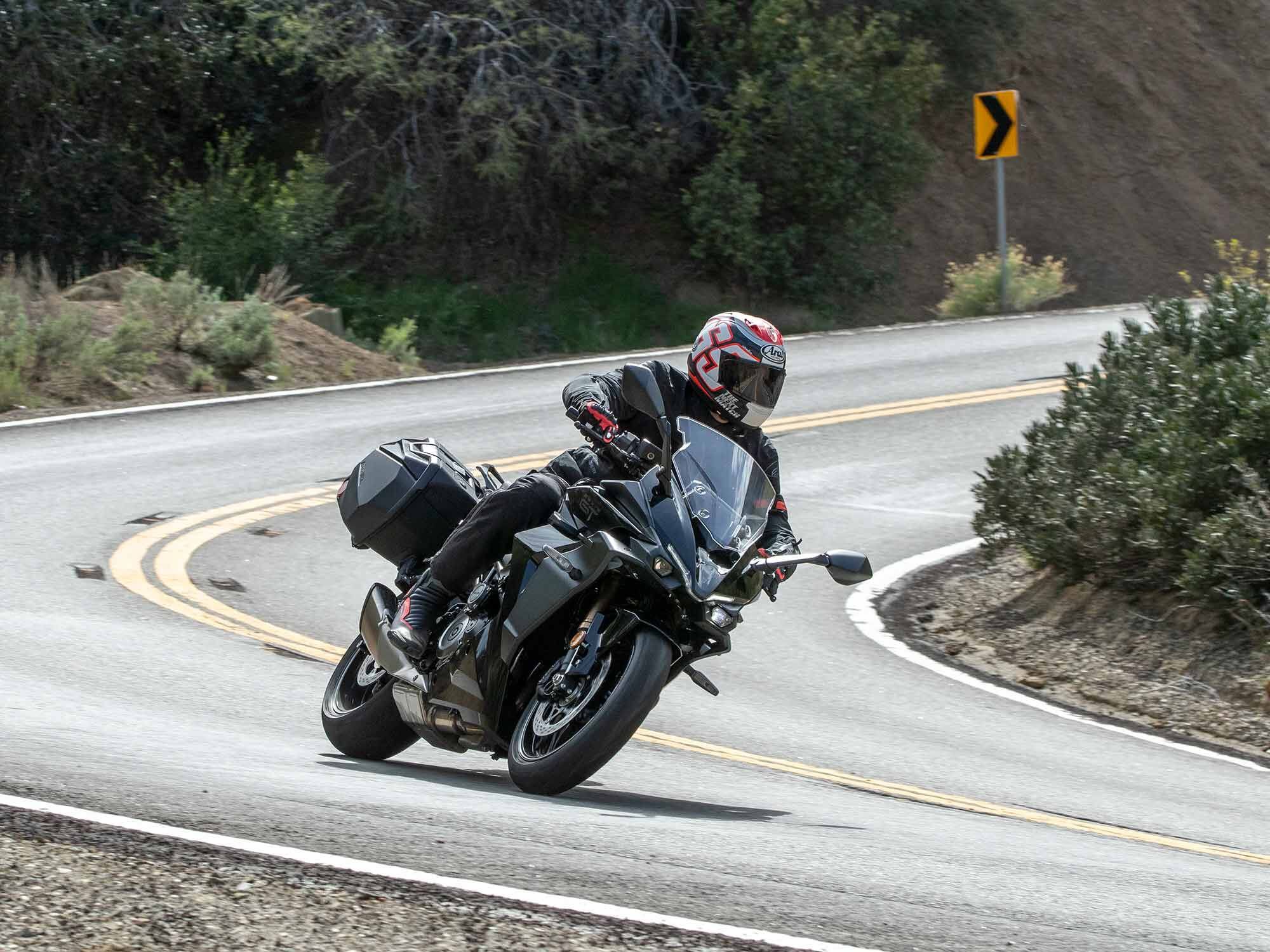 The 498-pound GT+ feels stable when on its side and holds a line well. (Kevin Wing/)Final Thoughts In a weird way, the GSX-S1000GT+ís sporty character is almost sneaky. At first glance, the GT is a big touring bike with a large windscreen and big cases on its sides. Yes, there are sharp, modern lines, but from the cockpit things are rather muted and clean. Comfortable. At a closer look the winglets capture the attention. So too does the quickshifter at every shift, a reminder of the sportbike DNA deep-rooted in every Suzuki design. Suzuki has done a phenomenal job finding that sweet spot between performance, comfort, and fun. Personally, Iíd like to have seen a few more features thrown at the bike. An adjustable windscreen seems like a better solution than an optional tall screen that requires customers to make a decision with long-term effects at the moment theyíre purchasing the bike; what happens if, a month down the road, they realize theyíve made the wrong choice? The fix isnít as easy as reaching over and adjusting the screen up or down. Similarly, heated grips would make sense on a bike thatís going to spend longer days on the road in a variety of conditions. With cruise control and so many other features already included, this seems like an obvious addition. Still, even without those details, the GSX-S1000GT and GSX-S1000GT+ are legitimate options within the sport-touring space. Sport-touring riders should be thankful that Suzuki tried again. 2022 Suzuki GSX-S1000GT+ Specifications MSRP:$13,799Engine:DOHC, liquid-cooled inline-four; 16 valvesDisplacement:999ccBore x Stroke:73.4 x 59.0mmCompression Ratio:12.2:1Transmission/Final Drive:6-speed/chainClaimed Horsepower:149.9 hp @ 11,000 rpmClaimed Torque:78.2 lb.-ft. @ 9,250 rpmFuel System:Fuel injection w/ ride-by-wireClutch:Wet, multiplate SCAS type; cable actuatedEngine Management/Ignition:Electronic (transistorized)Frame:Twin-spar aluminumFront Suspension:KYB 43mm inverted fork, spring preload, compression and rebound damping adjustable; 4.7 in. travelRear Suspension:KYB shock, spring preload, rebound damping adjustable; 5.1 in. travelFront Brake:Brembo 4-piston Monoblock calipers, dual 310mm discs w/ ABSRear Brake:Nissin 1-piston caliper, 240mm disc w/ ABSWheels, Front/Rear:Cast aluminum; 17 in./17 in.Tires, Front/Rear:Dunlop Roadsport 2; 120/70-17 / 190/50-17Rake/Trail:25.0į/3.9 in.Wheelbase:57.5 in.Ground Clearance:5.5 in.Seat Height:31.9 in.Fuel Capacity:5.0 gal.Claimed Wet Weight:498 lb.Contact:suzukicycles.com GEARBOX: 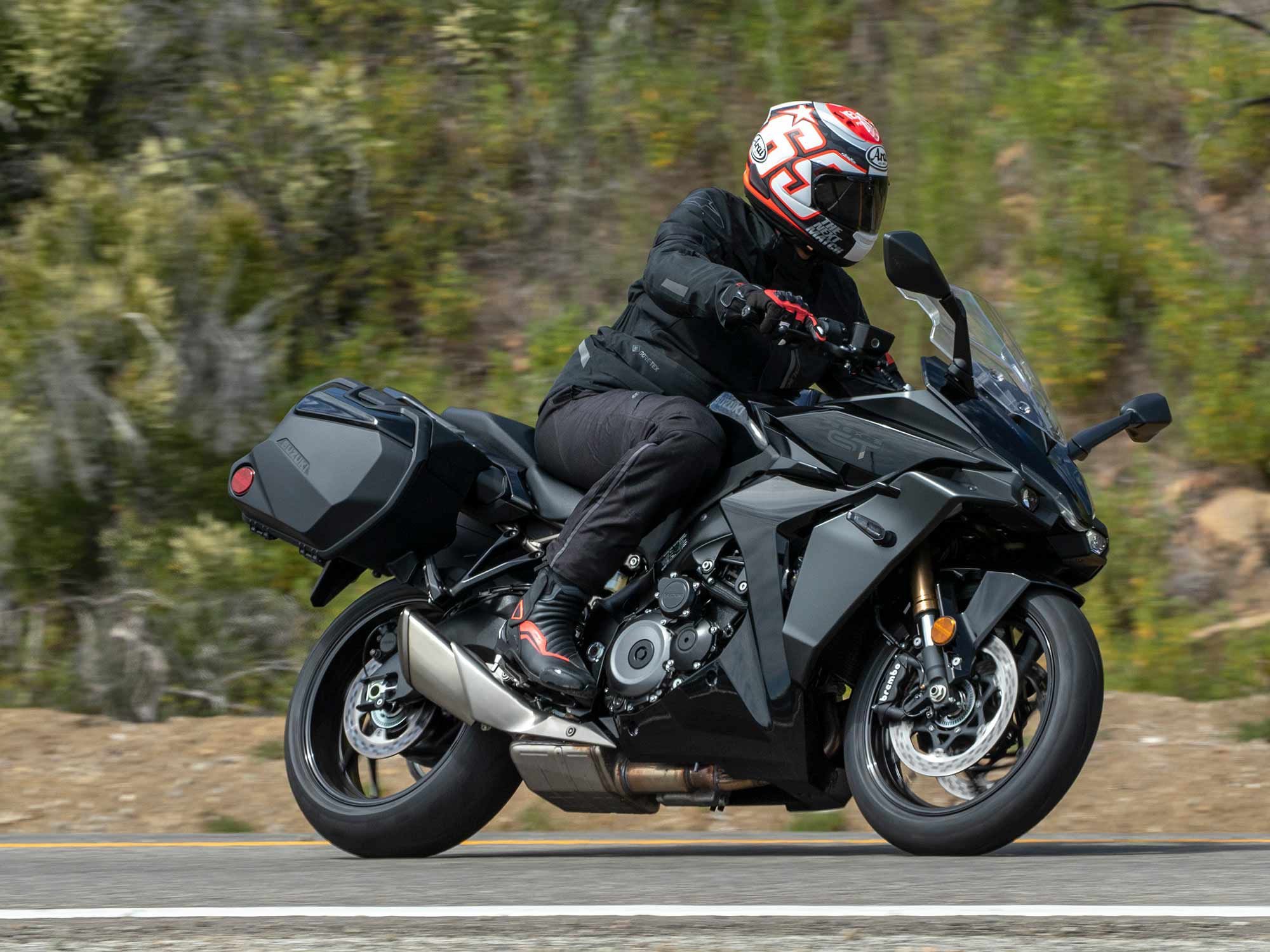 2022 Suzuki GSX-S1000GT+. (Kevin Wing/)Helmet: Arai Corsair-X Nicky Reset Jacket: Alpinestars Altamira Gore-Tex Pant: Alpinestars Gravity Drystar Gloves: Alpinestars T-SP W Drystar Boots: Alpinestars SMX-6 V2
__________________________________________________
I'm a bot. I don't need no stinkin' signature... |
|
|

|
 |
 Similar Threads
Similar Threads
|
||||
| Thread | Thread Starter | Forum | Replies | Last Post |
| [RideApart] - 2022 Suzuki GSX-S1000GT+ First Ride Review: Minimalism In Motion | Ninjette Newsbot | Motorcycling News | 0 | April 25th, 2022 12:03 PM |
| [RoadRUNNER] - 2022 Suzuki GSX-S1000GT & GSX-S1000GT+ | Ninjette Newsbot | Motorcycling News | 0 | March 31st, 2022 09:51 AM |
| [motorcycle.com] - 2022 Suzuki GSX-S1000GT First Look | Ninjette Newsbot | Motorcycling News | 0 | October 11th, 2021 01:15 AM |
| [RoadRUNNER] - The All-New 2022 Suzuki GSX-S1000GT | Ninjette Newsbot | Motorcycling News | 0 | October 4th, 2021 09:11 AM |
| [roadracingworld.com] - Suzuki Sets Pricing For 2022 GSX-S1000 & GSX-S1000GT Models | Ninjette Newsbot | Motorcycling News | 0 | September 29th, 2021 09:40 AM |
|
|